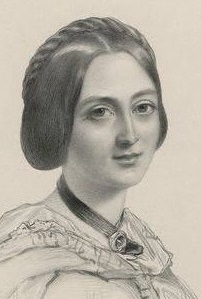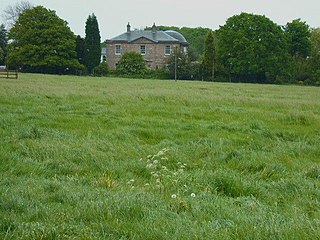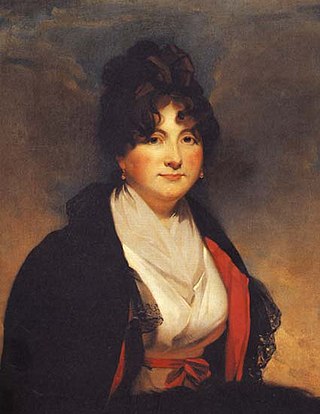
Sidney Herbert, 1st Baron Herbert of Lea, PC was a British statesman and a close ally and confidant of Florence Nightingale.

Baron Heytesbury, of Heytesbury in the County of Wiltshire, is a title in the Peerage of the United Kingdom. It was created in 1828 for the prominent politician and diplomat Sir William à Court, 2nd Baronet, who later served as Ambassador to Russia and as Viceroy of Ireland. His son, the second Baron, sat as Member of Parliament for the Isle of Wight. On his marriage in 1837 to Elizabeth Holmes, daughter of Sir Leonard Worsley Holmes, Lord Heytesbury assumed the additional surname of Holmes. His son the 4th baron commanded a battalion in the Wiltshire Regiment and was for a time in command of 62nd (Wiltshire) Regiment of Foot. As of 2010, the titles are held by his great-great-great-grandson, the seventh Baron, who succeeded his father in 2004.

William à Court, 1st Baron Heytesbury GCB PC, known as Sir William à Court, 2nd Baronet, from 1817 to 1828, was an English diplomat and Conservative politician.

Sidney Herbert, 14th Earl of Pembroke, 11th Earl of Montgomery,, styled The Honourable Sidney Herbert between 1861 and 1895, was a British politician and peer.

General Charles Grey was a British army officer, member of the British House of Commons and political figure in Lower Canada. In later life, he served as private secretary to Prince Albert and later Queen Victoria.

Sir William Pierce Ashe à Court, 1st Baronet was a British soldier and Member of Parliament (MP).
General William Ashe-à Court was a senior British Army officer and a Member of Parliament.

William Henry Ashe à Court-Holmes later Holmes-à Court, 2nd Baron Heytesbury was a British peer and Conservative Member of Parliament.

George Robert Charles Herbert, 13th Earl of Pembroke, 10th Earl of Montgomery, known as The Lord Herbert of Lea from 1861 to 1862, was a British Conservative politician. He was Under-Secretary of State for War under Benjamin Disraeli between 1874 and 1875.
Charles à Court Repington,, known until 1903 as Charles à Court, was an English soldier, who went on to have a second career as an influential war correspondent during the First World War. He is also credited with coining the term 'First World War' and one of the first to use the term 'world war' in general.

General George Augustus Herbert, 11th Earl of Pembroke and 8th Earl of MontgomeryKG, PC was an English peer, army officer, and politician.

Mary Elizabeth Herbert, Baroness Herbert of Lea, known simply as Elizabeth Herbert, was an English Roman Catholic writer, translator, philanthropist, and influential social figure.

Amington Hall is an early-19th-century former country house at Amington, near Tamworth, Staffordshire, which has been converted into residential apartments.
Charles Henry Wyndham A'Court was a Liberal Party politician in the United Kingdom.

Catherine Herbert, Countess of Pembroke and Montgomery, was a Russian noblewoman who married the 11th Earl of Pembroke.

Sir Cecil Beadon, was an English administrator in British India, serving as lieutenant-governor of the Bengal Presidency from 1862 to 1866, when he was relieved of the post after a commission of inquiry, which was critical of his handling of the Orissa famine of 1866.
Vice-Admiral the Hon. Herbert Edward Holmes à Court was an officer of the Royal Navy. His commands included HMS Revenge, HMS St Vincent, and the Royal Naval College, Osborne.

Edward Ashe of Heytesbury, Wiltshire was an English landowner, and Member of Parliament for Heytesbury for 52 years, from 1695 to 1747.
Edward Henry à Court-Repington, known as Edward Henry à Court until 1847 and sometimes spelled A'Court or A'Court-Repington, was a British Conservative and Tory politician, and navy officer.
Pierce A'Court Ashe, of Ivy Church and Heytesbury, Wiltshire, was a British Whig politician who sat in the House of Commons from 1734 to 1768.













